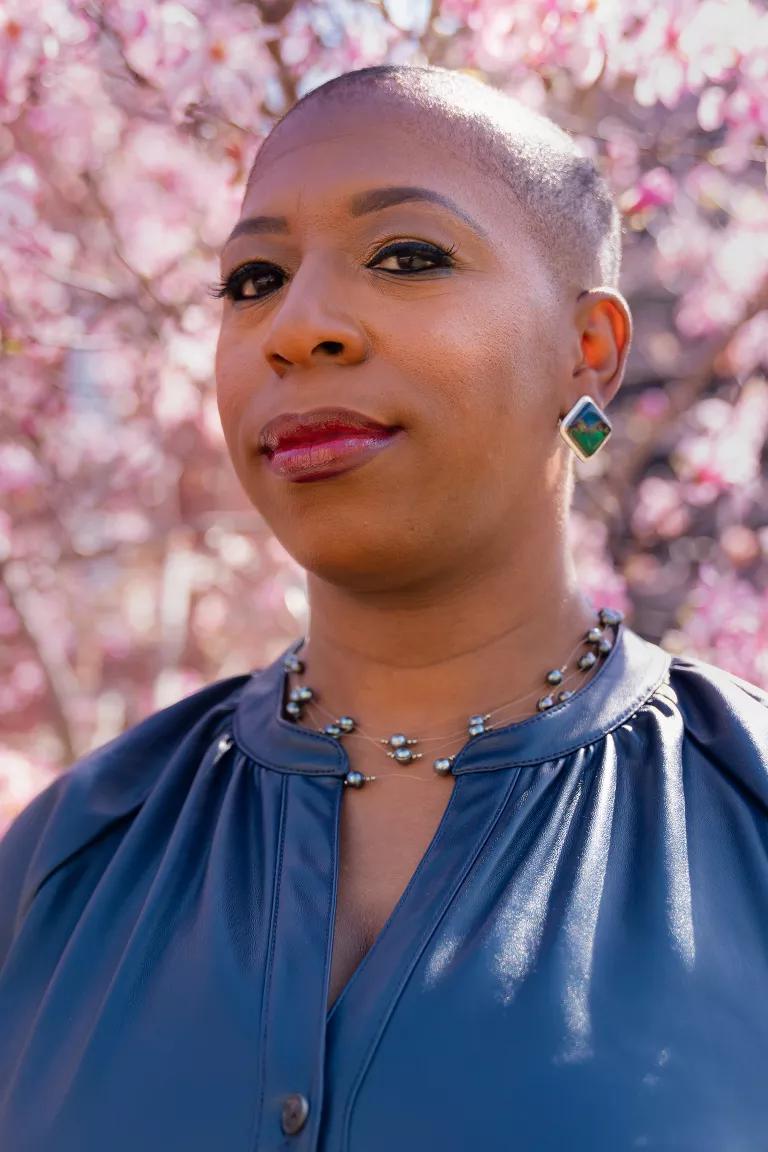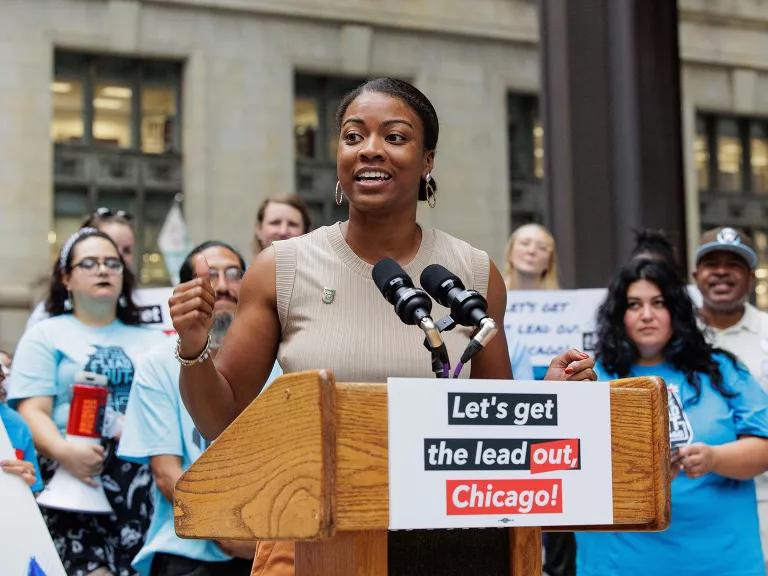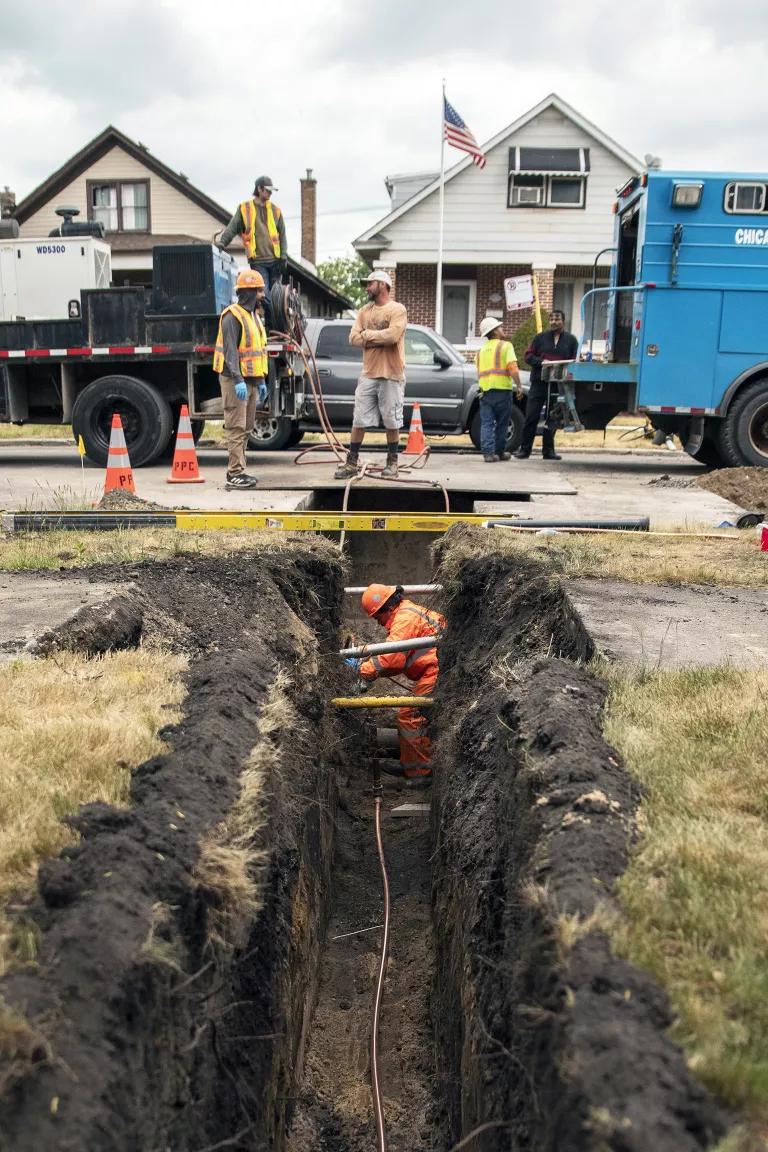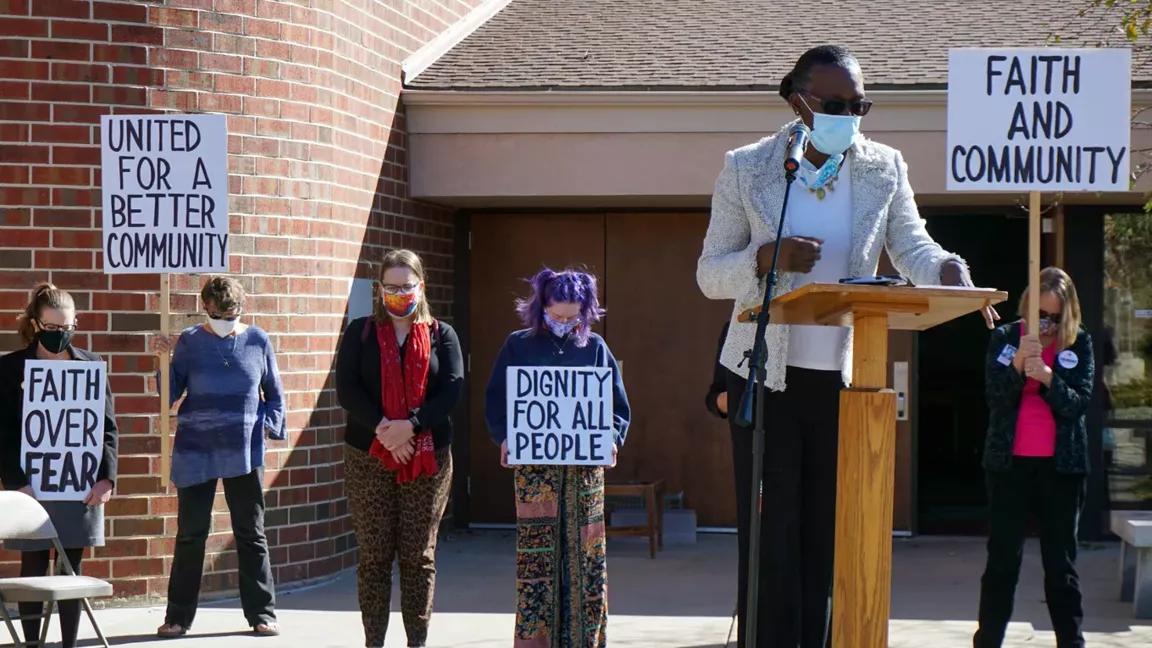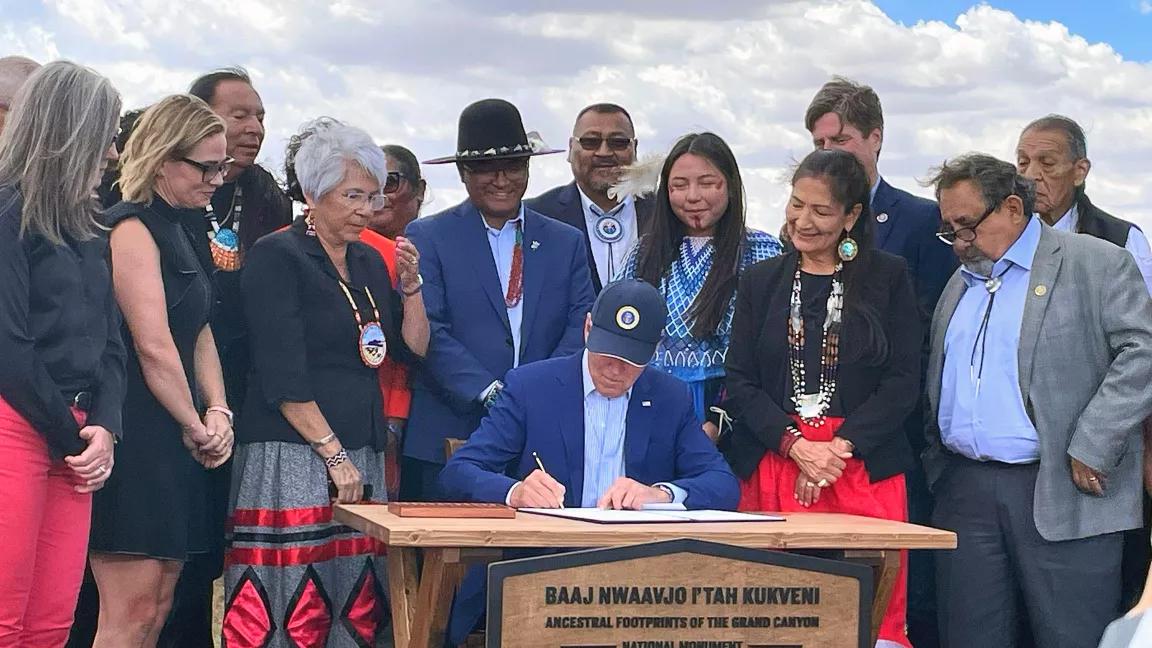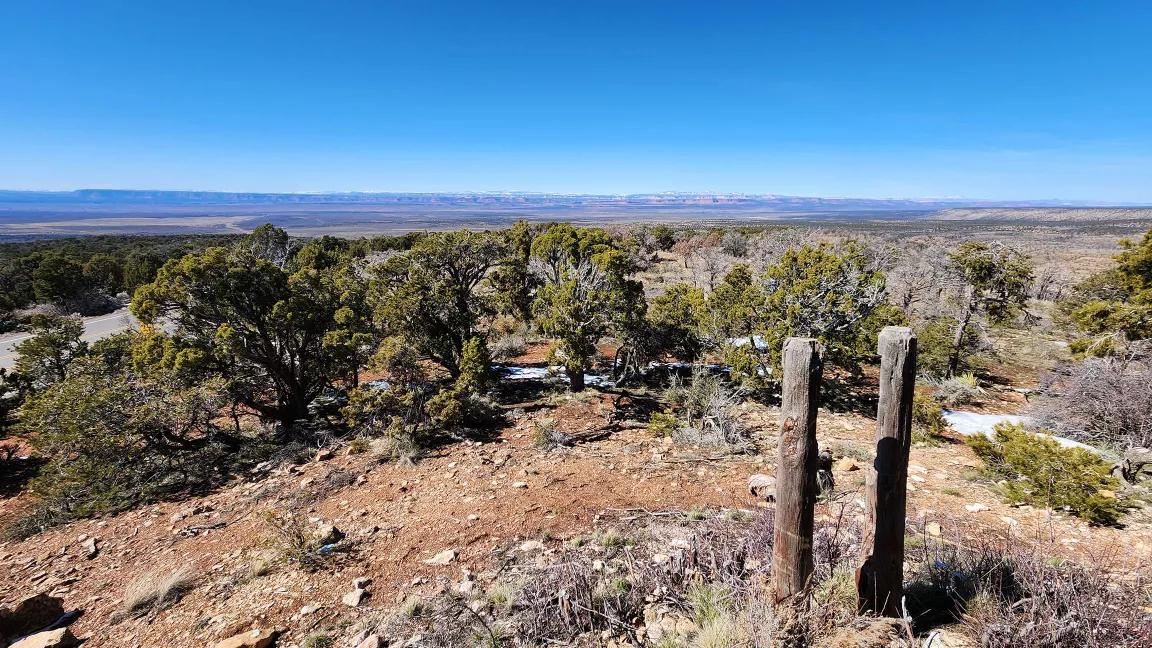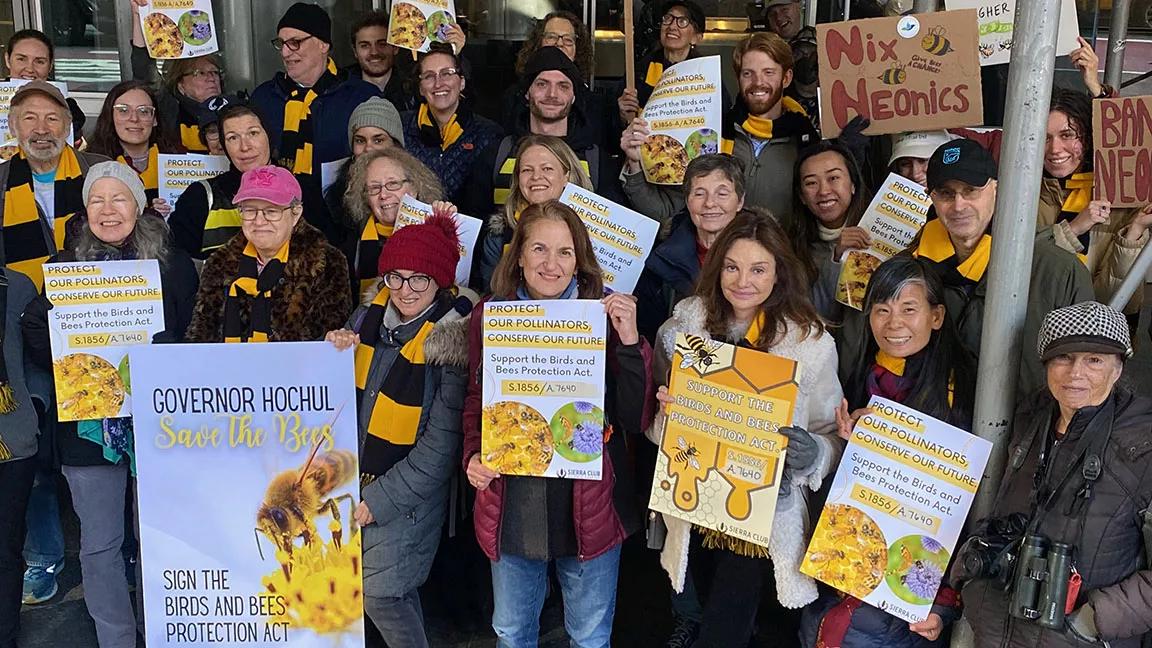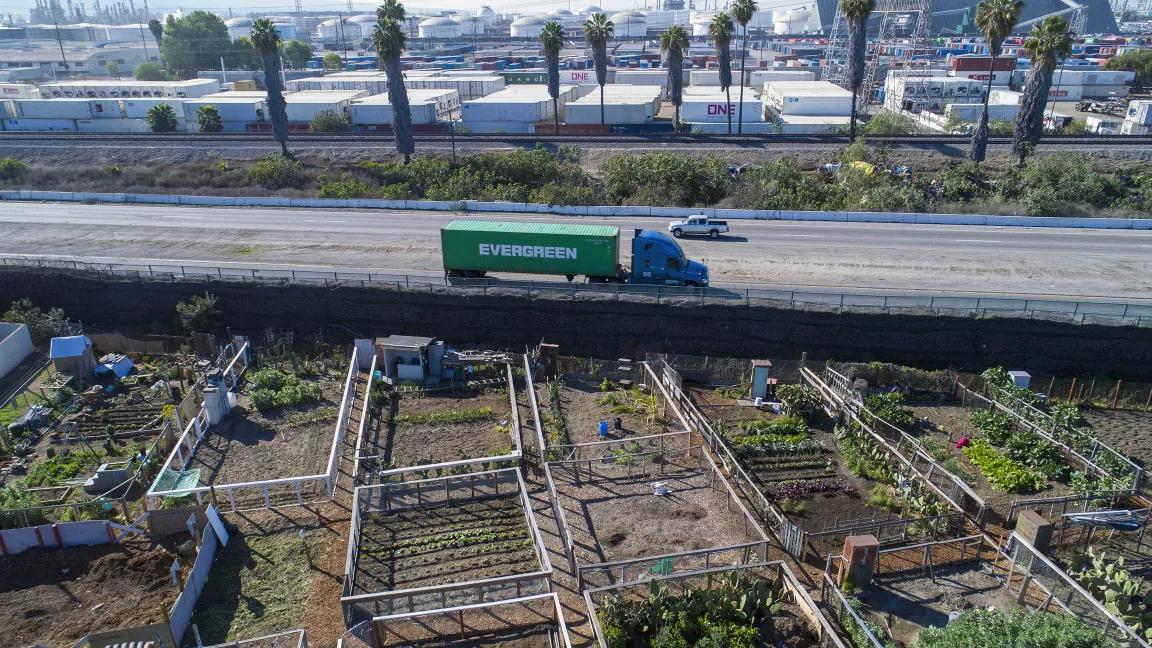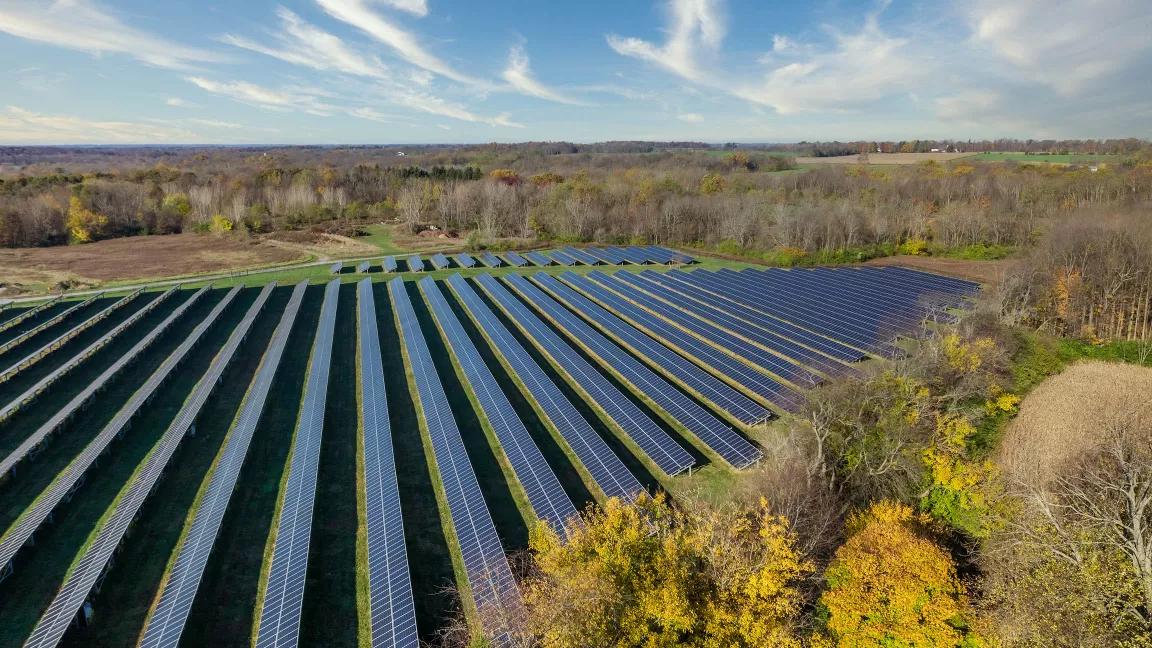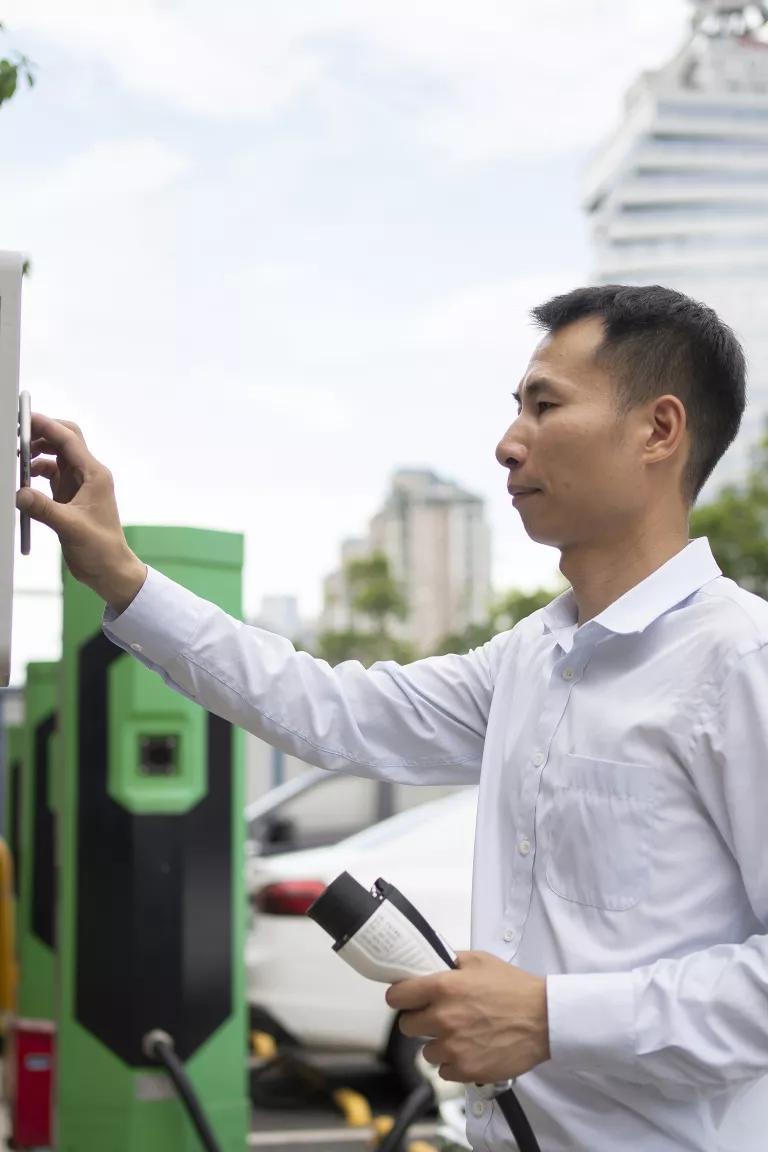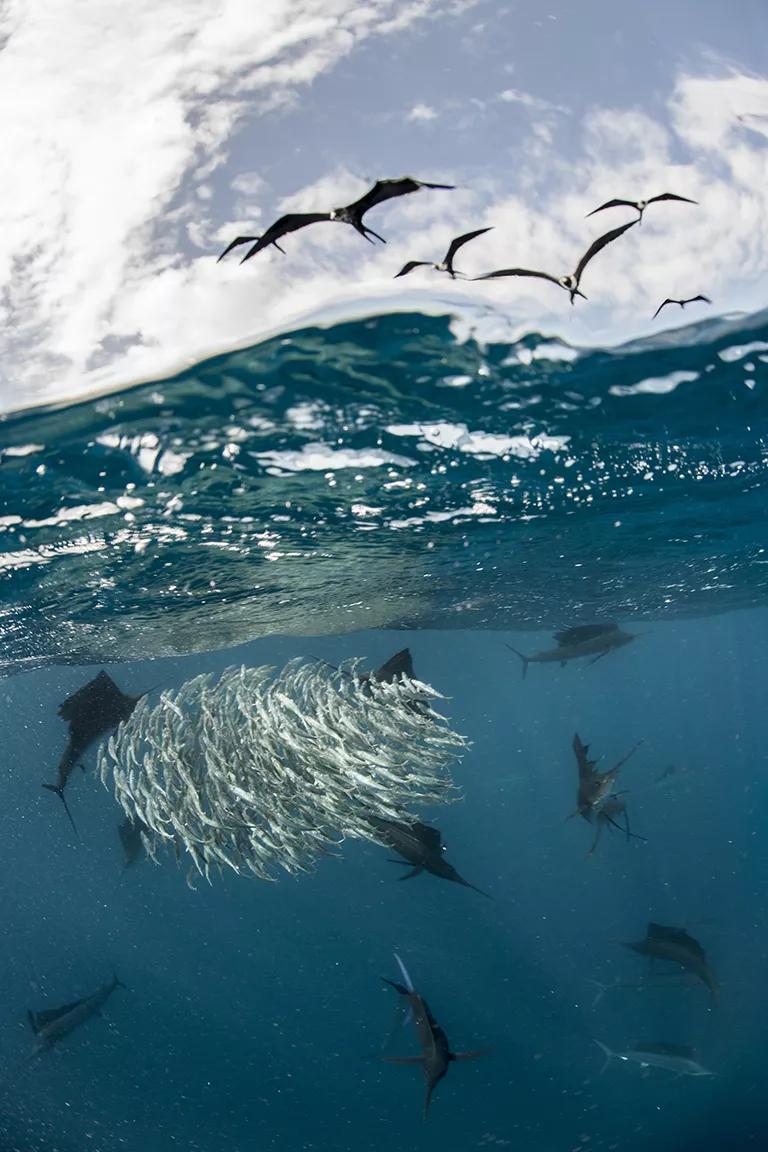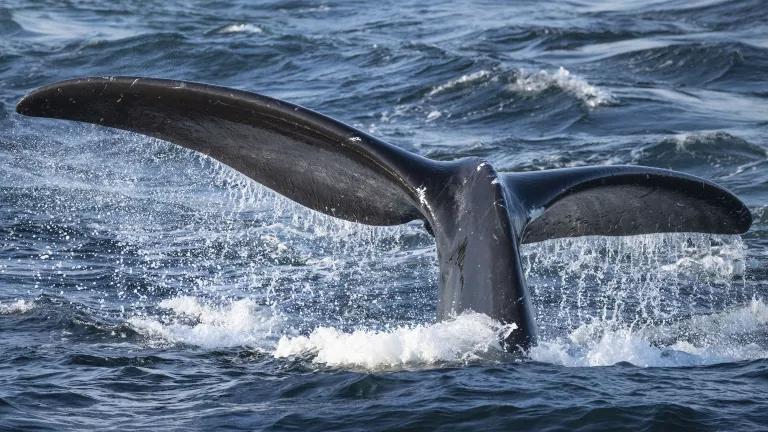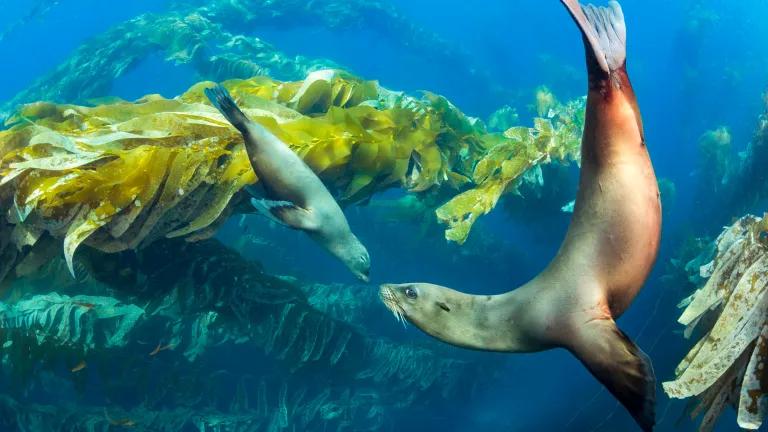Annual Report 2023: Reimagining the Future

Paul Grabowski
Reining in the climate crisis, stemming the loss of biodiversity, protecting public health, and advancing our economy were once viewed as independent challenges. Today, we understand that these intertwined problems must be tackled together. Thankfully, we know the solutions, and they already exist. To make the most of them, NRDC is dedicated to finding new ways of bringing people together—from community leaders to frontline activists to business groups to policymakers—in the fight for a better future. With this collective power, we’re on the road to durable, urgently needed change.
The Changemakers
The environmental movement is shifting constantly. New challenges are arising, new solutions are being developed, and activists from all walks of life are joining the fight. While NRDC has been evolving to meet the moment, we’ve remained steadfast in our commitment to protecting the planet and its inhabitants. That mission is what binds us—longtime NRDCers and newcomers alike—and guides every stride we make.
A climate leader to help steer the way
Christy Goldfuss joined NRDC in 2022 as the first-ever chief policy impact officer and now serves as executive director. Having previously served as the managing director of the White House Council on Environmental Quality under President Barack Obama and as deputy director of the National Park Service, Goldfuss is bringing her vast experience in policy strategy and partnership-building to help raise NRDC’s ambition and guide the organization’s advocacy priorities and strategies across teams.
Goldfuss spent her first year striving to turn our policy advocacy work into real-life impacts in key issue areas, from driving forward the renewable energy revolution and ensuring clean drinking water for all to protecting at-risk lands and waters. “Priorities matter,” Goldfuss said. “The only way to make any real progress is to determine what our priorities are and then set strategies and tactics for accomplishing them.”
A new chapter for the Science Office
Dr. Ticora V. Jones’s introduction to science was a chemistry set gifted to her by her dad when she was 10 years old. From there, her love and appreciation of the natural world led her on a career path to working first as a fellow on Capitol Hill for Senator Russ Feingold and then for the U.S. Agency for International Development, where she eventually became the agency’s first chief scientist. In February, she joined NRDC as Chief Science Officer.
Jones brings decades of expertise to NRDC, where she will work to deepen the scientific foundations of our advocacy and our relationships with the science and innovation community at large. “I think it’s important that our scientists have the tools and the community that they need,” said Jones, “which includes people to help translate what science tells us to policymakers and the broader public, in ways that encourage action. How are we visualizing new futures based on what’s come out in legislation, such as the Inflation Reduction Act? How are we implementing new energy sources 10 or 15 years down the road? How could community-driven research and science inform local approaches?” This sort of public input is essential to shaping solutions that will build a better, more equitable world. After all, as Jones reminds us, science isn’t just for the folks in white lab coats. It’s for anyone willing to stay observant and curious about the world around them.
A coalition builder for clean water
Chakena D. Perry joined NRDC’s Safe Water Initiative as a senior policy advocate tackling the drinking water crisis in Chicago and Illinois just over one year ago. Growing up in the notoriously polluted South Side of Chicago, Perry remembers relying on bottled water and the pain of watching her community grapple with numerous health and environmental threats. This led to a career dedicated to the environmental movement and civic engagement work. At 28, she became the youngest commissioner for the Metropolitan Water Reclamation District of Greater Chicago.
Perry now focuses on developing and advocating for policies to remove all remaining lead service lines in Chicago—which required the use of these lead pipes until they were federally banned in 1986. She collaborates with community groups, elected officials, and government agencies to fast-track the process. In October, members of this diverse coalition came together for a rally hosted by NRDC at the city’s Daley Plaza, with Perry as one of the speakers, to push for a strong federal Lead and Copper Rule that ensures that all lead service lines across the country are replaced within 10 years at no additional cost to homeowners and renters. Weeks later, after decades of building partnerships like these and ongoing advocacy and legal work by NRDC and our allies, the U.S. Environmental Protection Agency (EPA) rolled out its proposal, in alignment with the Biden administration’s commitment to safe drinking water. While it would require most cities to replace their lead pipes over the next decade, the proposal unfortunately gives Chicago an extension of 40 to 50 years to do this work and allows utilities to skirt their duty to fund it. NRDC is continuing to call on the agency to fulfill its obligation to advance environmental justice and avoid putting any additional financial burden on low-income homeowners or renters, whose landlords are unlikely to pay the cost of lead pipe replacement.
For Perry, solving the drinking water crisis is about much more than removing contaminants—it’s about delivering justice to low-income communities and communities of color who are disproportionately impacted. And including them in the conversation is the first step. “There are lots of opportunities where Big Green groups like ours can step back and make sure that voices from the community are influencing how a project goes,” Perry said. “There’s a lot of great work happening at the local level, and we should continue creating space to work together and learn from one another.”
Celebrating the Achievements of John Echohawk
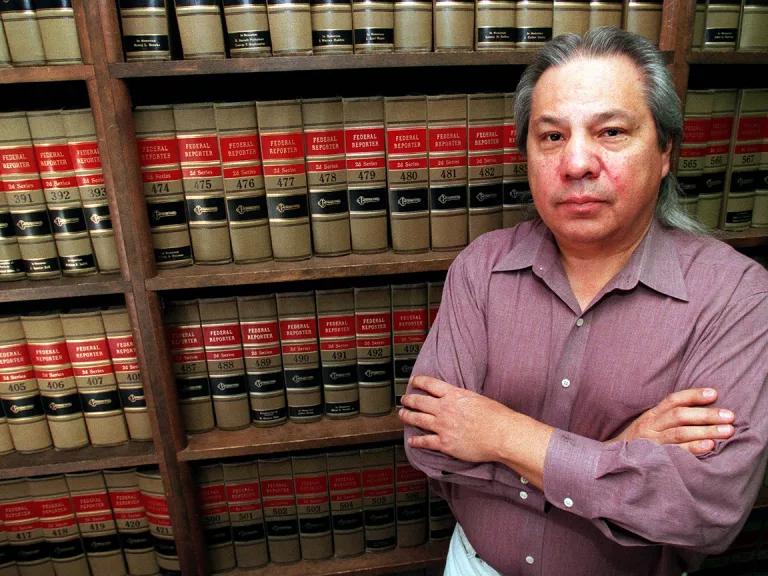
NRDC Trustee John Echohawk at the Native American Rights Fund in Boulder, Colorado, in 2013
Lyn Alweis/Denver Post via Getty Images
NRDC Board member John Echohawk received the 2023 Thurgood Marshall Award from the American Bar Association, an honor presented to members who have embraced a lifelong commitment to advancing civil liberties, civil rights, and human rights. A member of the Pawnee Nation, Echohawk dedicated his career to Native American law, focusing on tribal sovereignty and stewardship. In 1970, he cofounded the Native American Rights Fund, which is now among the most powerful legal advocacy organizations representing tribal interests in the country. NRDC Chief Counsel Mitch Bernard has known and admired Echohawk for three decades. “His integrity and record of achievements are a constant reminder of the importance of NRDC's mission: to protect the planet,” Bernard said, “and, in doing so, to vindicate the rights of all cultures and people, especially those who have endured, and continue to endure, the deepest burdens.”
Litigation & Legislation
Upholding critical laws in court remains a primary pillar of work at NRDC. Through our litigation this past year, we made progress in the fight for stronger drinking water protections, defended energy efficiency standards, and exposed the big polluters threatening to undermine our climate and nature goals. Combined with our policy advocacy, partnerships, and public awareness campaigns, this legal work delivered results, bringing us closer than ever before to removing lead at taps across the United States and paving the way for a suite of policies across the transportation and power sectors that will reduce carbon emissions and improve lives.

A black bear mother and her cubs at Anan Creek in Alaska's Tongass National Forest, where the Biden administration reinstated a ban on logging and most forms of roadbuilding across more than nine million acres, reversing a Trump-era decision to exempt the region from national Roadless Rule protections
Jennifer Kardiak/USFS
Victories in Alaska
Protecting the Tongass National Forest has been on NRDC’s docket since the early 1990s. Stretching across nearly 17 million acres of southeastern Alaska, the Tongass is the world’s largest intact temperate rainforest and home to more than 400 different species of wildlife, including the Alexander Archipelago wolves, brown and black bears, bald eagles, and all five species of Pacific salmon. The forest is also the ancestral homeland of the Indigenous Haida, Tlingit, and Tsimshian people, who rely on the natural resources the land provides.
A landmark piece of conservation policy, the Roadless Area Conservation Rule was passed in 2001 to protect the nation’s forests from development. NRDC spent the next two decades defending the rule in court from unfriendly administrations and industry allies. Our persistence paid off: In January 2023, the U.S. Forest Service responded to the ongoing advocacy of our coalition and restored full protections for nine million acres of the forest, reversing a 2020 decision by the Trump administration to exempt the Tongass from the Roadless Rule. Yet the decades-long pursuit of protections for these lands continues—in September, Alaska again challenged roadless protections for the forests.
“These places are only protected because there’s a dedicated group of folks who are willing to stand there and keep fighting. Year after year after year.”
Garett Rose, senior attorney, Nature, NRDC
In another corner of the state, NRDC has been working alongside a broad base of environmental allies for more than 20 years to stop the controversial Pebble Mine—a massive open-pit gold and copper mine—from going forward. In January 2023, our coalition’s years of filing petitions, showing up to investor shareholder meetings, and leading various public outreach campaigns paid off when the EPA effectively vetoed the project by granting petitions to ban the disposal of mining waste in Bristol Bay. The Pebble Mine would have had disastrous impacts on the pristine Bristol Bay watershed, which contains 40,000 square miles of wild tundra and wetlands and supplies more than half of all sockeye salmon sold globally. This still isn’t the final nail in the coffin for Pebble Mine, but the momentum for the project has faded, and the odds are no longer in the company’s favor to bounce back.
A big step forward for our Safe Water Initiative
In November, nearly three years after NRDC, along with partner groups and 10 state attorneys general, challenged the EPA for inadequate drinking water regulations that have left millions of people exposed to toxic lead, the Biden administration proposed to mandate replacement of every lead pipe in the United States, in most cases within the next 10 years.
The EPA’s proposed Lead and Copper Rule Improvements set the stage for how the entire nation will address lead in drinking water for years to come. As this decision was taking shape, we deployed a comprehensive campaign to support a strong rule, built upon the work of our staff, partners, and local groups, who have too often faced the crisis of lead-contaminated drinking water in their communities.
“A new Lead and Copper Rule can help us accelerate lead pipe removal with greater equity for Black, Latine, and low-income communities.”
Angela Guyadeen, director, Safe Water Initiative, Environmental Health, NRDC
Most recently, NRDC and local partners in several states released a major report showing that removing every lead pipe in the nation would result in hundreds of billions of dollars in health and economic benefits. The report came on the heels of a new documentary produced by ABC News and National Geographic that captured the attention of millions of viewers, which prominently featured Erik D. Olson, NRDC’s senior strategic director for health, as well as our frontline partners, and highlighted lessons from our litigation and advocacy in Newark, New Jersey, and the challenges facing Chicago in removing lead service lines.
To get the Lead and Copper Rule across the finish line, we brought together a new coalition of partners. Among other actions, we worked together to set up a Senate task force with Senators Cory Booker and Tammy Duckworth to drive home the importance of a strong rule. None of these milestones would be possible without the foundation laid by our past and ongoing advocacy and legal work on drinking water, which go back decades. And our dedication to the issue will continue as we organize to engage a broad base of NRDC members and activists in demanding the EPA finalize the rule quickly and implement the strongest lead in tap water program possible.
Better air, water, and health for Michigan
Complementing our federal safe water advocacy, NRDC policy experts continue to work with numerous state governments to implement local solutions. Michigan—which drew national attention to America’s water woes a decade ago through the crisis in Flint—made strides this fall after Governor Gretchen Whitmer signed the Filter First bills. The package of three different bills will require the installation of lead-removing filters at all designated drinking and cooking water outlets in every school and childcare center.
This landmark law is based on NRDC’s model bill and is the most cost-effective way to protect kids from lead in drinking water. Instead of testing for lead and then going through the expensive process of replacing all the affected pipes and fixtures, the Filter First law requires the installation of water filters in all designated drinking and cooking water outlets. (Follow-up testing ensures the filters are working properly.) The law was backed by NRDC and a team of public health, medical, learning disability, education, and environmental advocates who pushed for the bill over the last four years. Now, with Michigan as an example, NRDC will continue to replicate the Filter First campaign with our partners in other states and, ultimately, at the federal level.
In another important victory, Governor Whitmer signed the Clean Energy Future bill package into law, which will improve clean energy standards, energy efficiency standards, and equity and affordability for consumers throughout the state. NRDC’s Michigan advocacy team played a crucial role in developing the policy priorities that eventually became the centerpieces of the bill. Together with our coalition partners, we fought back against Michigan’s utilities and polluting industries, which worked to delay and weaken the package. “These bills translate into better air, water, and health for everyone. The path-breaking standards for the Midwest industrial heartland will see the state move to 100 percent clean energy by 2040 and put more resources toward energy efficiency,” said NRDC’s Michigan policy advocate Derrell Slaughter. “Michigan has seized the opportunity to demonstrate our commitment to combating climate change and ensure a sustainable, just, and prosperous future for our state.”
New York’s All-Electric Building Act
New York is another state on the path toward net zero carbon emissions, thanks to a first-in-the-nation law that will soon ensure new homes and buildings under seven stories use electric heat and appliances instead of fossil fuels, starting in 2026. (Taller residential buildings and smaller commercial buildings will be rolled into the program in 2029.) NRDC’s experts, who helped shape the law, expect the All-Electric Building Act to set an important precedent for other states to follow.
Buildings are the largest source of greenhouse gas emissions in the Empire State. As a result, this law was critical in positioning the state to succeed in reaching its 2050 net zero carbon goal, set in 2019 when the legislature adopted the nation-leading Climate Leadership and Community Protection Act. To help close this gap, NRDC experts advocated in collaboration with hundreds of environmental, labor, and grassroots organizations to pave the way for the All-Electric Building Act’s passage. We’ll now focus on the even more important work of developing policy solutions to help transition existing buildings from old gas-burning heating and hot water systems, including through supporting the New York Home Energy Affordable Transition Act, which would end customer subsidies for gas industry expansion and create cost protections for low- and moderate-income households.
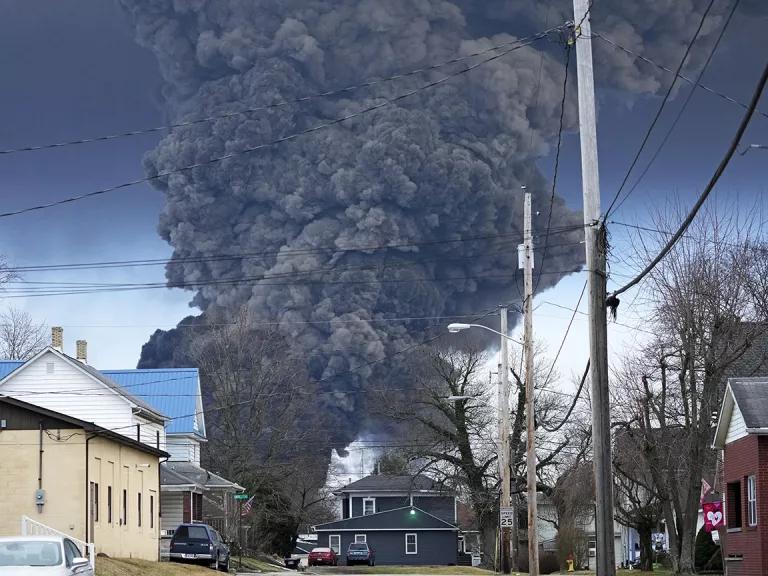
A large plume of smoke rises over homes in East Palestine, Ohio, after the controlled detonation of a portion of a derailed Norfolk Southern freight train on February 6, 2023. The train, which contained around 50 cars, 10 of them carrying hazardous materials, derailed in a fiery crash on February 3.
Gene J. Puskar/AP Photo
The end of dangerous “bomb trains”—for now
In September 2023, the U.S. Department of Transportation (DOT) finally moved to suspend a rule enacted by the Trump administration that allowed the transport of liquefied natural gas (LNG) by rail across the country without a special permit. Transporting LNG by rail presents a tremendous risk to public safety and health, exposing communities to fiery explosions and choking, toxic clouds. The East Palestine, Ohio, disaster in February 2023, which unleashed similarly volatile substances, showed us just what’s at stake if these “bomb trains,” carrying thousands of gallons of LNG, were to derail or malfunction.
This issue is particularly urgent for communities in the Northeast, where a gas developer is pushing for a massive project involving the transport of LNG across 200 miles via trains and trucks from Wyalusing, Pennsylvania, to Gibbstown, New Jersey. That’s 200 miles where an accident could happen and nearly two million lives would be at risk.
In response to NRDC’s action alert, more than 8,000 activists sent letters to the DOT, calling on officials to suspend the LNG-by-rail rule, which helped yield this important victory. But our work is far from done; the suspension will only remain in effect for two years. Since the agency has said it plans to develop a new rule, NRDC has been pushing for a swift follow-up. “After pausing the rule, Secretary of Transportation Pete Buttigieg should put a new rule in place that restores the ban on LNG by rail once and for all,” said Kimberly Ong, who leads regional advocacy work on NRDC’s Environmental Health program and has been spearheading the fight against the terminal. “That would finally put an end to the threat to communities around Gibbstown and other communities targeted by similar dangerous projects.”
Growing the Movement
Underpinning many of NRDC’s successes are a diverse coalition and strong ties with environmental justice (EJ) allies. Together, we seek to amplify the voices of frontline communities and ensure that elected officials are listening—a time-tested way to make lasting progress. Over the past year, NRDC and our partners continued to broaden the movement for climate action and a healthier future for all. We saw results at the local, state, and federal levels, from air pollution protections in California to a long-overdue designation of a national monument in the Southwest.
New Yorkers come together for the birds and the bees
A coalition of health professionals, environmental groups, farmers, chefs, brewers, and religious leaders helped sway Governor Kathy Hochul to sign the Birds and Bees Protection Act in the final days of 2023. The first of its kind in the nation, the new law curbs the use of neonicotinoid pesticides (aka neonics), which are among the most ecologically destructive pesticides since DDT. In addition to contributing to mass losses of bees and other pollinators critical to New York’s agricultural economy and environment, neonics also pose risks to human health, especially during pregnancy. The new law will prohibit the wasteful use of these toxins as coatings on corn, soybean, and wheat seeds and their applications on lawns and gardens. When fully implemented, this legislation is expected to eliminate up to 90 percent of the neonics entering the state’s lands and water supplies annually.
NRDC has been advocating for passage of the Birds and Bees Protection Act since 2019. Our policy advocates were instrumental in seeing the bill’s passage through the legislature, in facilitating negotiations between the governor and legislative leaders, and in leading efforts to build a broad coalition in support of the law. We also harnessed the power of our own network: This year, we sent more than 4,500 letters from NRDC activists urging Hochul to sign the bill. Other NRDC efforts included numerous op-eds and press events, in-person and virtual lobby days, celebrity partnerships, phone banking, and a rally in front of the governor’s New York City office with dozens of NRDC members, staff, and grassroots supporters. The steady drumbeat of support helped push the bill—which faced fierce opposition from the chemical industry—over the finish line.
Uniting around faith-based climate action in Colorado
Due to a combination of fossil fuel emissions, increasing frequency and severity of wildfires, and a mountainous topography that traps pollution, Coloradans endure some of the country’s worst air quality. Meanwhile, a housing crisis plagues Colorado’s cities, and the water levels in the Colorado River (which supplies drinking water to 40 million people) continue to decline.
Faith-driven individuals and groups—including communities of Buddhists, Christians, Jews, and Muslims—are playing a unique role in reaching people on these issues. NRDC’s Denver-based advocacy team notes that the voices of religious leaders have emerged as a critical part of the coalition of Coloradans backing climate progress in the state. Together Colorado, a Denver coalition of 220 congregations and religious leaders, recently sent an informational sheet to state legislators on its priority issues, stating, “No matter what we look like, how much is in our wallets, or where we come from, everyone deserves a safe, stable place to call home.”
Our alignment with these diverse groups has yielded progress: In 2022, Governor Jared Polis laid out a vision to address the housing crisis by encouraging cities to allow denser housing near transit lines while the Colorado legislature passed HB22-1304, a bill supported by NRDC that creates grant programs dedicated to affordable housing and sustainable land use. NRDC and its advocacy partners also successfully saw through the adoption of a new Clean Cars policy by the state’s Air Quality Control Commission in 2023, ensuring that residents will have access to more electric and hybrid vehicles.
A victory for the Grand Canyon Tribal Coalition
At a time when the country seems hopelessly divided, the Baaj Nwaavjo I’tah Kukveni—or Ancestral Footprints of the Grand Canyon National Monument—designated by President Biden this summer, serves as a reminder that the protection of nature still unites us. Bolstered by decades of advocacy in support of more protections, the designation received broad support after being proposed in April 2023 by the Grand Canyon Tribal Coalition. Its proponents included more than 30 state lawmakers and many local governments and business owners, as well as hunting and angling groups. The monument, which comprises lands outside Grand Canyon National Park, encompasses sacred sites like Red Butte, archaeological wonders, springs, and historical sites that figure prominently in Indigenous histories.
“The widely popular designation of these lands as a national monument is a vitally important step in protecting them from the threat of unchecked uranium mining, an activity that has historically threatened the water supplies in the Grand Canyon region—and continues to do so.”
Bobby McEnaney, director, land conservation, Nature, NRDC
This is the third national monument designation that incorporates Indigenous co-stewardship management and was modeled partly after that of Bears Ears National Monument in Utah, which NRDC vigorously supported and later defended in court when the Trump administration sought to undo protections for the lands. (The Biden administration subsequently slammed Trump’s rollback as “unprecedented,” observing that NRDC and our partners’ lawsuits had “raised serious and fundamental questions” about the move.) NRDC will continue to defend the long-standing principle that America’s national monuments are to be protected for all people and to reinforce the critical role that tribes have assumed in advocating for a more inclusive and equitable management framework by the federal government.
10 Years After Baez v. New York City Housing Authority
In 2013, NRDC joined residents of New York City’s public housing to file a lawsuit demanding the agency address the rampant mold and moisture problems in tenants’ apartments. In 2023, we reunited to reflect on the work. Through a new oral history, community leaders and organizers describe the progress and the struggles residents have experienced over the years, and the challenges that lie ahead. The project, made possible with support from Humanities New York, affirms that their fight for justice and safe, affordable housing will continue.
Cleaning up the freight industry in California
The American Lung Association’s 2023 report showing that California hosts 6 out of the top 10 most diesel-polluted cities reinforced the long-standing calls of frontline communities to address their state’s hazardous air quality and tighten pollution controls on the freight industry. And in response to their advocacy efforts, the California Air Resources Board adopted two new regulations: the Advanced Clean Fleets rule and the In-Use Locomotive regulations. These guidelines stand to accelerate the zero-emission truck revolution and drastically cut pollution from freight trains and other vehicles. NRDC provided technical analyses, comment letters, and testimony in support of these rules for several years, and the milestone was built on work we’ve been doing for more than a decade, in close coordination with EJ partners.
The Advanced Clean Fleets and In-Use Locomotive regulations are key parts of a suite of policies by California to cut down on toxic air pollution. California is prioritizing cleaning up diesel pollution from the freight industry because this is one of the fastest-growing sources of greenhouse gas emissions and a dominant source of the state’s harmful nitrogen oxide pollution. And, as environmental justice leaders have highlighted, freight hubs and commercial corridors tend to be clustered in low-income communities and communities of color, which leaves their residents disproportionately exposed to toxic diesel fumes. To continue moving the work forward, NRDC is now partnering with a large coalition of public interest, environmental, public health, climate justice, labor, and industry groups to advance legislation designed to ensure that we build the electrical infrastructure needed to support the new vehicle standards.
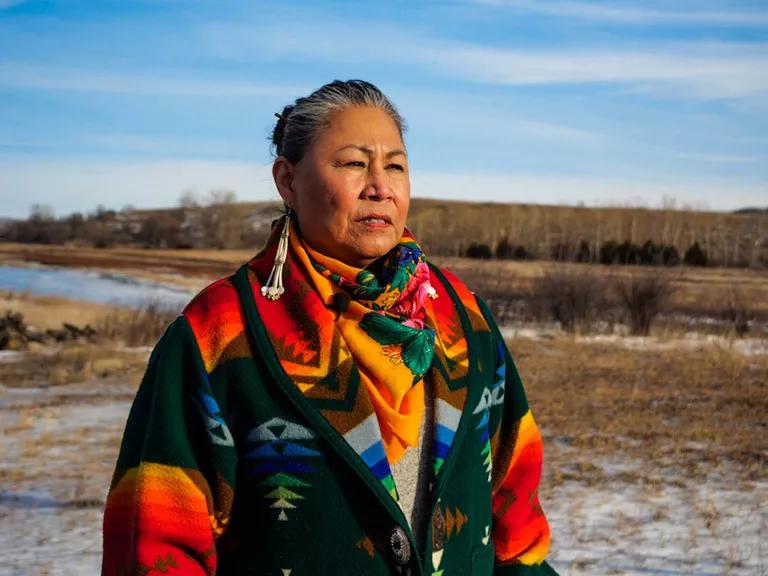
Janet Alkire, chair of the Standing Rock Sioux Tribe
Courtesy of Standing Rock Sioux Tribe
Standing with those who remind us that water is life
The U.S. Army Corps of Engineers released a long-awaited draft environmental impact statement for the notorious Dakota Access Pipeline (DAPL) in fall 2023. The pipeline currently carries crude oil underneath the Missouri River at Lake Oahe in North and South Dakota and threatens the main water source for the Standing Rock Sioux Tribe.
“For Indigenous Peoples across North America (and beyond), our input, our demands, and our cries of ‘water is life’ have been ignored. How can we be respected as sovereign nations when the rivers that run through our traditional homelands and territories are managed solely by federal agencies?”
Elybeth Sofia Alcantar, PhD student, University of Texas, Austin, and former NRDC intern
Despite nearly a decade of protest by tribal members and allies who have called attention to the inherent dangers posed by the pipeline, the Army Corps’s latest announcement did not include a recommendation as to whether DAPL should close. To bring awareness to the threats and the need for federal action, NRDC rallied nearly 16,000 public comments to demand a fair environmental review by the government. And a team of NRDC experts worked with the Standing Rock Sioux Tribe to submit technical comments to the Army Corps regarding the pipeline’s climate emissions, the risks of an oil spill to clean water and endangered species, and other threats. We also worked with a team of four students in our Indigenous Knowledge and Perspectives internship program. During the course of their work with NRDC, they wrote moving personal essays describing the hazards that fossil fuels have inflicted on Indigenous communities like their own, which were then shared with our activists. While we await a decision from the Army Corps, we’ll continue to urge the Biden administration to go back to the drawing board and conduct a comprehensive, meaningful assessment based on the best science and shut down the Dakota Access Pipeline.
A coalition championing solar in Ohio
No other state has retired more coal plants in recent years than Ohio. Now, as the Buckeye State charts its way to a clean energy future, a growing solar industry is playing a vital role in attracting new local investments—with the backing of a broad coalition of Ohioans.
Since 2018, Dan Sawmiller, NRDC’s Ohio-based director of labor policy, and his team have been helping to build this public base of support for various solar projects. Among them is Birch, a 300-megawatt solar farm planned for Allen and Auglaize counties that would generate enough clean energy to power the equivalent of 55,000 local homes per year as well as create good-paying jobs and other economic opportunities. In October 2023, underscoring the importance of Ohio’s growing renewables industry, we teamed up with the International Brotherhood of Electrical Workers Local 32 in a joint legal filing to ask the Supreme Court of Ohio to reverse a decision by the Ohio Power Siting Board, which found that Birch was not in the “public interest” and thereby could not move forward. The court filings were supported by the Chamber of Commerce, labor unions, independent power producers, state-based manufacturing companies, local citizens, and environmental groups, reflecting a growing awareness that sustainability and economic growth can and should coexist. These multi-sector collaborations are at the core of NRDC’s Ready for Renewables campaign, rolling out across the nation.
Spring Advocacy Summit
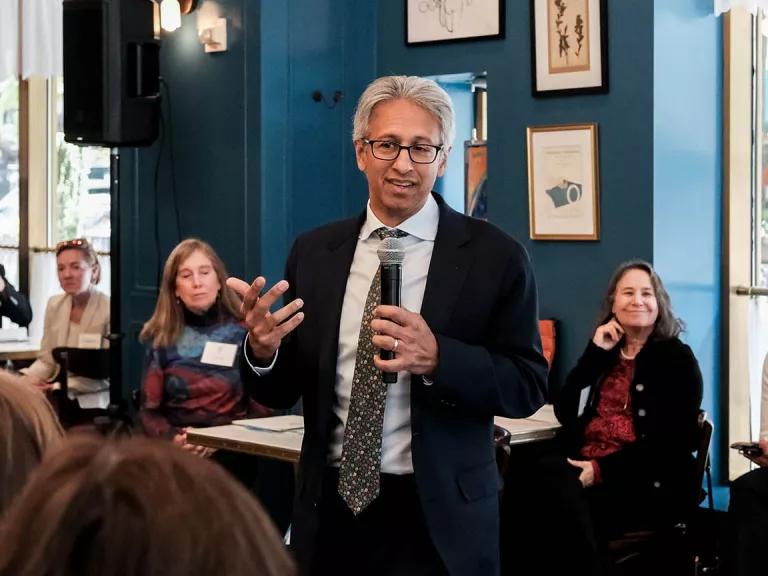
NRDC President Manish Bapna speaking to attendees at the GLC Annual Meeting in Washington, D.C., April 2023
Michael McCoy for NRDC
Green Leaders for Change (GLC) is a community of philanthropists and advocates who are politically engaged. GLC Members lobby policymakers, sign on to congressional leadership letters, strategize with experts, and leverage connections to help further NRDC’s mission to protect the health and well-being of people, communities, and the planet. In 2021 and 2022, GLC members played a key role in advocating for climate provisions that were successfully incorporated into the Inflation Reduction Act.
The annual GLC Advocacy Summit will be held on May 13–16, 2024, in Washington, D.C. This year’s theme of “Winning 2024” will focus on how to defend the gains we’ve achieved while highlighting the work that lies ahead. GLC Members will have the opportunity to engage with like-minded environmental activists, NRDC experts, and policymakers in Congress and the Biden administration. Key speakers and panelists of previous summits include EPA Administrator Michael Regan, Senator Cory Booker, and Speaker Emerita Nancy Pelosi. To learn more about the GLC, contact Manager Ehsaneh Sadr at GLC@nrdc.org.
Global Action
Meaningful progress on climate change, biodiversity loss, and environmental pollution cannot happen in isolation, which is why NRDC has continued to urge the global community to develop comprehensive plans to tackle these intertwined crises. Over the past year, we saw some significant changes toward this end. The United States and China agreed to tighten cooperation on reducing methane pollution and accelerating renewable energy development to peak their power sector emissions this decade, thanks in part to our ongoing advocacy in both countries. Cities and states throughout India also took action by advancing groundbreaking energy efficiency initiatives. And at COP28, NRDC experts met with world leaders—including then Special Presidential Envoy for Climate John Kerry and other senior officials from Canada, China, Germany, India, and Nigeria—to advocate for a strong global agreement. The conference yielded a historic result: More than 190 countries called for tripling renewable energy, doubling the pace of energy efficiency gains, and ending deforestation and forest degradation. In the coming year, NRDC is poised to play a critical role in linking ambition, accountability, and action as we translate these goals into new policies and investments.
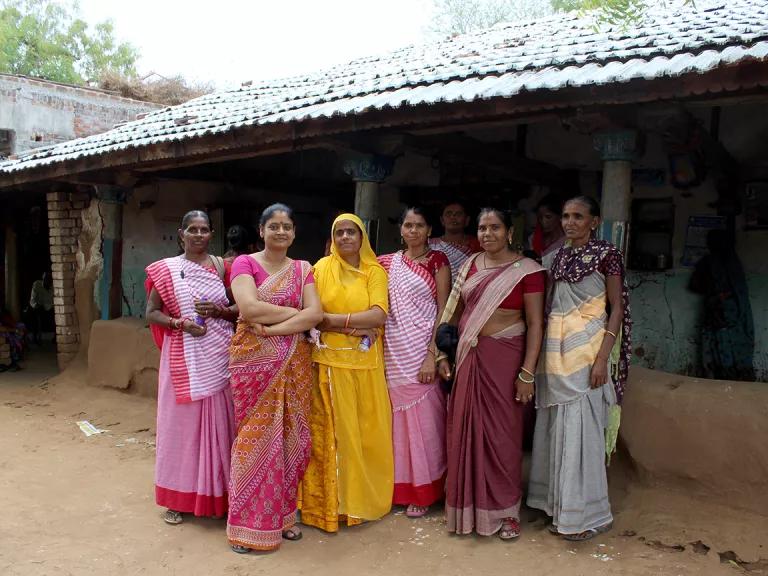
Women outside a home with a painted cool roof—which can help to address extreme heat by reflecting some of the sun’s incoming radiation back out to the atmosphere to reduce heat retention in buildings—in a village in Gujarat, India
Charu Lata/NRDC India
Sustainable cooling in India
India, with the world’s fastest-growing economy, is in a unique position to model sustainable development as it progresses. By constructing new buildings with energy-efficient technologies and passive cooling elements, the country is embracing climate-smart building from the start and seizing opportunities to reduce emissions and enhance prosperity. This year, the NRDC India team worked with its local partners to help advance state-level building energy codes and organized meetings of government representatives and national groups to advocate for climate-friendly cooling throughout the country. By 2028, cooling roof materials will sit atop buildings across 116 square miles of the state of Telangana, home to 35 million people. The result is expected to avoid 30 million tons of carbon dioxide emissions, cumulatively.
“The Telangana Cool Roof policy is not just the first of its kind in India; it is the first of its kind globally.”
Prima Madan, director, cooling & energy efficiency, International, NRDC
In 2023, we announced NRDC India Private Limited—our new affiliate in New Delhi that is led by Dipa Singh Bagai, whose past public policy credentials include high-level positions at the World Bank and the United Nations Development Programme. Bagai and her team will continue to advance our work with cities and local organizations to pilot programs such as the Heat Action Plans, which raise awareness of impending, dangerously high temperatures and offer resources to help people cope with intensifying heat waves. One study estimated that the action plan has prevented more than 1,000 deaths per year in Ahmedabad alone since 2013. Plans are underway to scale up these programs.
Transitioning away from fossil fuels in China
No progress on climate change can happen without China, where coal is the primary source of emissions. The nation has committed to peaking carbon pollution by 2030. To help it reach this goal, NRDC and our partners have been supporting the low-carbon transition of a set of crucial industries, including the cement, chemicals, power, and steel sectors, as well as a group of key coal-producing and/or -consuming provinces, including Henan, Guangdong, Inner Mongolia, Jiangsu, Shandong, and Shanxi. For example, in Inner Mongolia, our recommendations were reflected in a new policy to double renewable capacity there by 2025, and double it again by 2030.
We have also worked to advance the integration of electric vehicles (EVs) into the power system. In January 2024, after almost a decade of advocacy, the Chinese government released a document that sets ambitious targets and dates for implementation of a strategy known as vehicle-grid integration (VGI). VGI essentially harnesses the energy storage capacity of EVs to bolster the power grid, with EV owners being encouraged to charge during off-peak hours and then sell that power back to grid operators during peak hours, when demand is highest. VGI is an important solution to enhancing the use of sustainable energy while also assuring stability of the system.
A high seas treaty
International negotiators have long struggled to agree on measures to prevent the depletion of fisheries, the loss of unique and fragile habitats, and the decline of marine life across the globe. But with pollution, climate change, and exploitation of precious resources increasingly endangering the health of the ocean, NRDC has remained dedicated to finding solutions.
After many years of working with international partners on this issue, in March 2023, we celebrated a monumental step forward, reaching consensus on a new U.N. treaty to address the silent crisis of biodiversity loss in the high seas, an area covering nearly half the planet.
The new treaty has the potential to greatly bolster the health and resilience of the ocean to the effects of climate change, such as sea level rise and acidification. NRDC is now focused on obtaining the 60 ratifications necessary for the agreement to go into effect before the next U.N. Ocean Conference in 2025 and laying the groundwork for its effective implementation.
“In bringing modern standards of conservation to the high seas, the U.N. treaty is not only a win for marine wildlife but for the billions of people for whom healthy oceans are vital to sustaining their nutrition, livelihoods, and cultural heritage.”
Lisa Speer, senior policy analyst, Nature, NRDC
Ready for renewables
The people of the United States are deeply divided on many issues, but two-thirds agree that the federal government should do more to confront the climate crisis. With that public pressure, NRDC has continued to guide implementation of critical federal policies, including the 2022 Inflation Reduction Act and the 2021 Bipartisan Infrastructure Law. Taken together, these investments have tremendous potential to remake the U.S. power sector and spur progress toward a sustainable, energy-efficient future. To achieve our 2030 and 2040 climate goals, we need all the renewables, storage, and transmission that both laws can drive—and then some. We are now working to ensure that these projects happen in ways that create good jobs, provide meaningful benefits to the communities that host them, and help advance our biodiversity goals across the country.
2023 Financial Statement & More
Annual Reports: Dive into NRDC's Work
Every year, NRDC works to safeguard the earth—its people, its plants and animals, and the natural systems on which all life depends.



